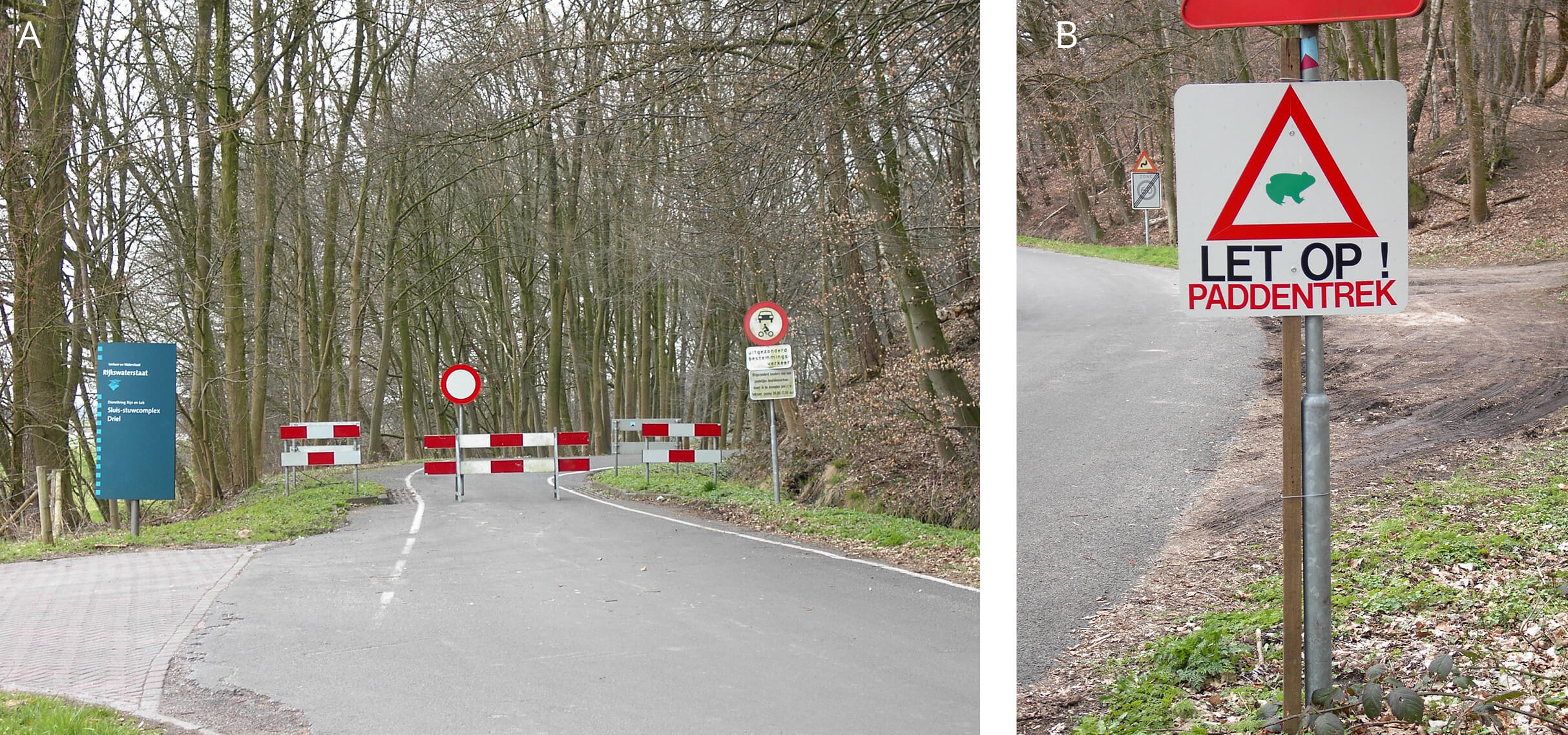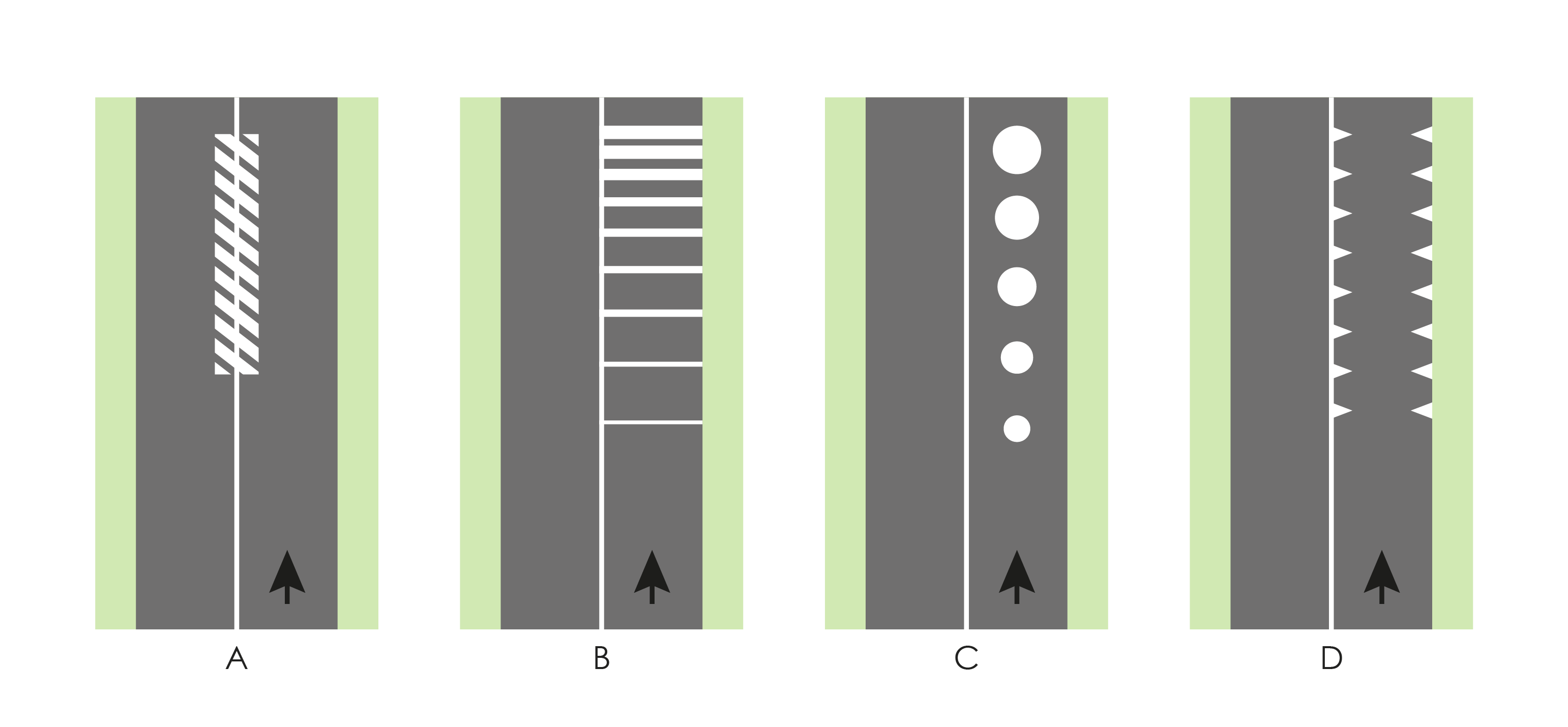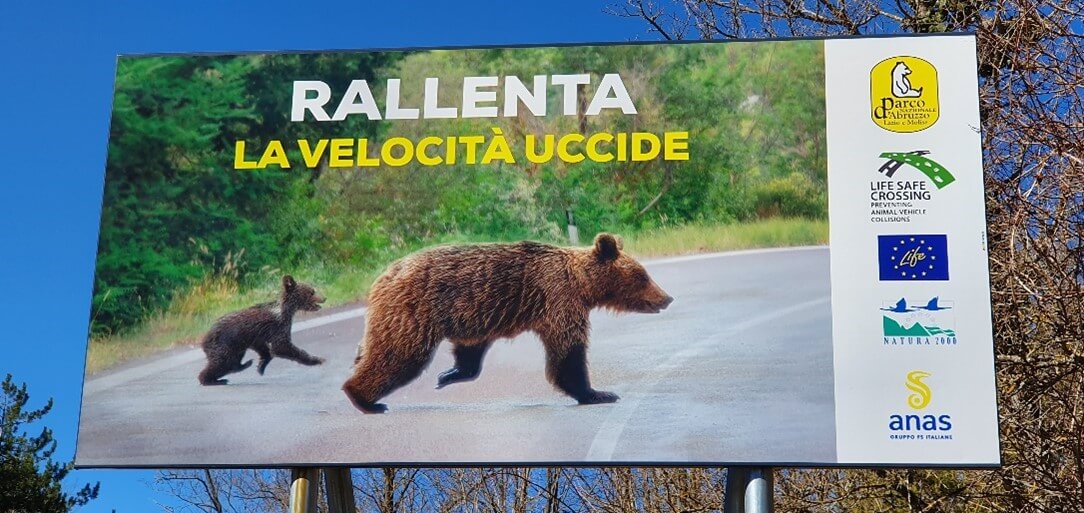The volume of traffic, which is usually measured as the average number of vehicles per day, and its speed influences the effects that transport infrastructure has on wildlife. Different species can react differently to the infrastructure depending on the number of vehicles (see Chapter 1 – Ecological effects of infrastructure). Less traffic could mean less risk of animal-vehicle collisions and less noise, light, and chemical pollution disturbances for biodiversity. Therefore, traffic management may help to reduce impacts on biodiversity. Two main measures are a reduction of traffic volume – temporarily or permanently – and a regulation of traffic speed. These measures could be permanent at priority sections crossing vulnerable habitats, natural protected areas or other sites where traffic impacts require mitigation. They may also be temporary to take account of sensitive periods, such as breeding or migration seasons for selected target species or when hazards such as higher incidence of animal vehicle collisions
Traffic volume reduction
- Temporary road closure is a suitable measure in cases where vulnerable species are particularly affected by roads during a limited period, such as mating or migration seasons. This measure reduces the likelihood of AVCs and protects animals during most vulnerable periods (Figure 5.6.11). Some examples are:
- During mating season. Some species, such as amphibians, have relatively short periods of time with high levels of activity, for example during humid nights in spring. They also show seasonal migration to their breeding ponds. The breeding season for some reptiles such as turtles and some bird species also creates increased risk from traffic.
- During migration season. Species such as ungulates have concrete periods through the year where large scale movement, crossing infrastructures, is observed. Some species of amphibians also migrations to ponds.
- Temporary closure can be undertaken for a period of several weeks or months, but also during some periods of the day. For example, some ungulates species cause more accidents during dawn/dusk in their mating season. In these cases, the regulation could involve closure for a number of hours every day for a period of several months.
- Traffic volume on small forestry roads or similar access routes can be restricted to authorised vehicles such as residents, services or forest managers.
- Reduction of the road width also limits the effect of traffic. Drivers must reduce speed on narrower roads and may choose alternative routes instead.
- Permanently closing a road with low traffic volume and where traffic can be rerouted to an alternative infrastructure is the best way to reduce the impact of a road on biodiversity and restore ecological connectivity. This is the decommissioning stage of an infrastructure life cycle and should be complemented with demolition and ecological restoration, which are normally costly actions.
- In both temporary and permanent closures, a thorough evaluation of the resulting traffic directed to alternatives routes should be conducted because an increase in traffic on alternative routes could have important effects for biodiversity in those areas.
Implementing temporary road closures or traffic restrictions can be a cost-effective and efficient way to protect wildlife, but it is essential to consider the impact on human activities, such as local traffic and emergency services, and to plan accordingly. Temporary closures may not be as effective as permanent ones, but may be the only option available depending on other social-economic priorities. In order to limit the inconvenience and increase acceptability, infrastructure users should be clearly informed not only of the deviation route but also the reason for the closure.
Traffic speeds management
Reducing traffic speed in road sections crossing vulnerable areas reduces disturbance and risk of collisions with wildlife. On road sections where wildlife is known to cross or where there is a history of AVCs it can give both animals and drivers more time to react (Figure 5.6.12). Reducing the speed limit will also reduce the severity of collisions when they do occur, and reduce the risk of injury or death for both animals and humans.
Traffic calming measures are intended to modify driver behaviour, reduce speed and increase road safety. Standard wildlife awareness signs which indicate a speed limitation are not effective due to a widely observed driver habituation effect. Therefore, different methods may be used to achieve the necessary reduction of speed based on i) physical measures, ii) pavement surface treatments, iii) enforced wildlife awareness signs iv) traffic enforcement such as speed cameras. Measures must be selected according to types of roads and traffic features. It is crucial to consider the potential impacts on safety and traffic flow and to plan accordingly.
- Physical measures to be applied at conflictive road sections include narrowing roads – which has been demonstrated to prompt drivers to reduce speed – constructing roundabouts, installing speed humps – which are raised sections of pavement creating a physical obstacle that requires drivers to reduce their speed- and modifying pavements.
- Pavement treatments can be applied to produce a perceptual ‘narrowing road effect’. Several patterns painted on the road surface have been tested to achieve this goal, such as transversal optical bars, peripheral transverse optical bars, ‘herringbone’ markers, optical circles and others (Figure 5.6.13).
- Effectiveness of wildlife awareness signage that posts speed limits could be enhanced using signs equipped with Animal Detection Systems (ADS) that activate flashing lights, urging a reduction in speed, only when an animal is detected by sensors or thermal cameras in the vicinity of the carriageway (see Section 5.3 – Driver warnings). Signs can also be programmed to activate only when the presence of an animal coincides with a vehicle approaching at a speed exceeding a predetermined threshold.
- Temporary flashing signs which urge a reduction in speed can be set to activate only when the speed measured with a doppler radar exceeds the posted speed limit and/or during the periods of highest animal-vehicle collision risk, e.g., during the night, dusk and dawn. Raised driver awareness and education play an important role in successful reduction of vehicle speeds. Specific panels carrying messages which use neuromarketing techniques may help to change driver behaviour in this regard (Figure 5.6.14).
- Speed reduction signs could be combined with the installation of radar activated speed notification signs or even speed cameras in order to deter speeding drivers and encourage compliance with posted speed limits.



